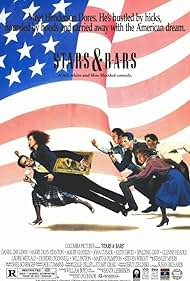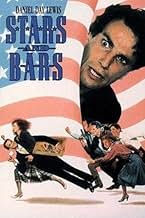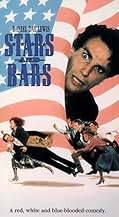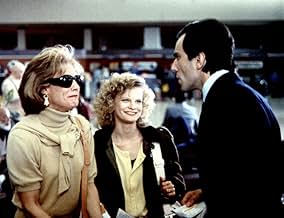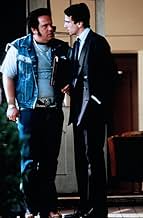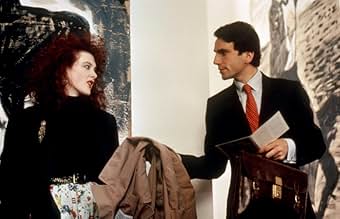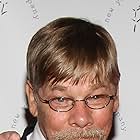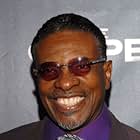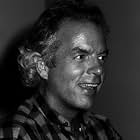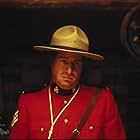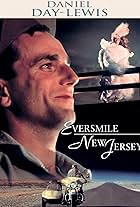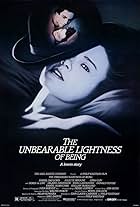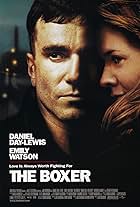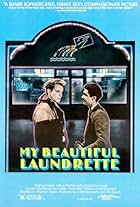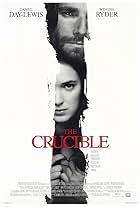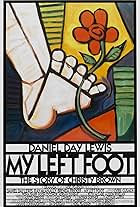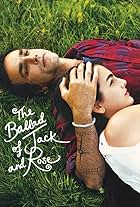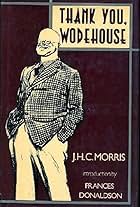A British art expert travels across America in order to purchase a rare Renoir painting in the South but comes across some crazy characters in the process.A British art expert travels across America in order to purchase a rare Renoir painting in the South but comes across some crazy characters in the process.A British art expert travels across America in order to purchase a rare Renoir painting in the South but comes across some crazy characters in the process.
- Awards
- 1 win
Daniel Day-Lewis
- Henderson Dores
- (as Daniel Day Lewis)
Storyline
Did you know
- TriviaA rejected score was composed by Elmer Bernstein.
- ConnectionsFeatured in Nostalgia Critic: Should We Stop Method Acting? (2020)
Featured review
My review was written in March 1988 after watching the film at a Manhattan screening room.
In David Puttam's legacy at Columbia Pictures, "Stars and Bars" represents a major faux pas. Unfunny mixture of farce and misdirected satire has no conceivable audience apart from undiscriminating pay-cable viewers.
Project was developed by Puttna, but given to his ex-partner Sandy Lieberson to produce after Puttnam acceded to head of Columbia. Though an American picture, it features a high complement of U. K. personnel behind the camera.
Scripted by William Boyd from his novel, thin story line follows the misadventures of a Brit in America, or rather someone's view of what America is like (targets of Boyd's satire are all straw men). Daniel Day-Lewis plays the hapless hero, an art expert sent by his boss to acquire a rare Renoir painting (worth about $10,000,000) from hayseed Harry Dean Stanton, who claims to have bought it for $500 in France in 1946.
Bulk of the pic deals with Day-Lewis' interactions with Stanton's weird brood, including Maury Chaykin as his Elvis-imitating son who already has sold the painting to unscrupulous, rival New York art dealers. Nonsensical gags and caricatures represent a real comedown from Hollywood's cutesy but effective portrayal of Southern goofballs, especially in such funny films as the 1945 Fred MacMurray vehicle, "Murder, He Says".
Add to this concoctions some awkward bedroom farce (Day-Lewis unconvincingly juggling his new pickup, Joan Cusack, at an Atlanta hotelwith his fiancee Laurie Metcalf) that wouldn't pass muster as a West End farce for the tourist trade, and pic self-destructs rapidly. Helmer Pat O'Connor evidences no feel for comedy, having the cast overact unmercifully, except for standup comic Steven Wright (as Day-Lewis' business rival) who maintains his familiar deadpan pesona.
Day-Lewis is downright embarrassing, suffering through two extended nude chase scenes and nearly bursting a blood vessel in his uncharacteristic turn. Stanton is wasted in the sort of role he graduated from a decade ago and juve actress Martha Plimpton is miscast in a precocious temptress role.
Supporting cast is one long in-joke, featuring tons of New York talent whose presence will mean nothing to national audiences and add nothing to the picture, e.g., Spalding Gray, Rockets Redglare. Structurally the fact that Will Patton (recently impressive as the villain in "No Way Out") has a key role but doesn't show up on screen until two brief scenes in the final reel is mystifying.
Sting contributes an excellent theme song "An Englishman in New York", from his latest LP, which is pointlessly reprised near the end of the film.
In David Puttam's legacy at Columbia Pictures, "Stars and Bars" represents a major faux pas. Unfunny mixture of farce and misdirected satire has no conceivable audience apart from undiscriminating pay-cable viewers.
Project was developed by Puttna, but given to his ex-partner Sandy Lieberson to produce after Puttnam acceded to head of Columbia. Though an American picture, it features a high complement of U. K. personnel behind the camera.
Scripted by William Boyd from his novel, thin story line follows the misadventures of a Brit in America, or rather someone's view of what America is like (targets of Boyd's satire are all straw men). Daniel Day-Lewis plays the hapless hero, an art expert sent by his boss to acquire a rare Renoir painting (worth about $10,000,000) from hayseed Harry Dean Stanton, who claims to have bought it for $500 in France in 1946.
Bulk of the pic deals with Day-Lewis' interactions with Stanton's weird brood, including Maury Chaykin as his Elvis-imitating son who already has sold the painting to unscrupulous, rival New York art dealers. Nonsensical gags and caricatures represent a real comedown from Hollywood's cutesy but effective portrayal of Southern goofballs, especially in such funny films as the 1945 Fred MacMurray vehicle, "Murder, He Says".
Add to this concoctions some awkward bedroom farce (Day-Lewis unconvincingly juggling his new pickup, Joan Cusack, at an Atlanta hotelwith his fiancee Laurie Metcalf) that wouldn't pass muster as a West End farce for the tourist trade, and pic self-destructs rapidly. Helmer Pat O'Connor evidences no feel for comedy, having the cast overact unmercifully, except for standup comic Steven Wright (as Day-Lewis' business rival) who maintains his familiar deadpan pesona.
Day-Lewis is downright embarrassing, suffering through two extended nude chase scenes and nearly bursting a blood vessel in his uncharacteristic turn. Stanton is wasted in the sort of role he graduated from a decade ago and juve actress Martha Plimpton is miscast in a precocious temptress role.
Supporting cast is one long in-joke, featuring tons of New York talent whose presence will mean nothing to national audiences and add nothing to the picture, e.g., Spalding Gray, Rockets Redglare. Structurally the fact that Will Patton (recently impressive as the villain in "No Way Out") has a key role but doesn't show up on screen until two brief scenes in the final reel is mystifying.
Sting contributes an excellent theme song "An Englishman in New York", from his latest LP, which is pointlessly reprised near the end of the film.
- How long is Stars and Bars?Powered by Alexa
Details
Box office
- Budget
- $7,500,000 (estimated)
- Runtime1 hour 34 minutes
- Color
- Sound mix
Contribute to this page
Suggest an edit or add missing content

